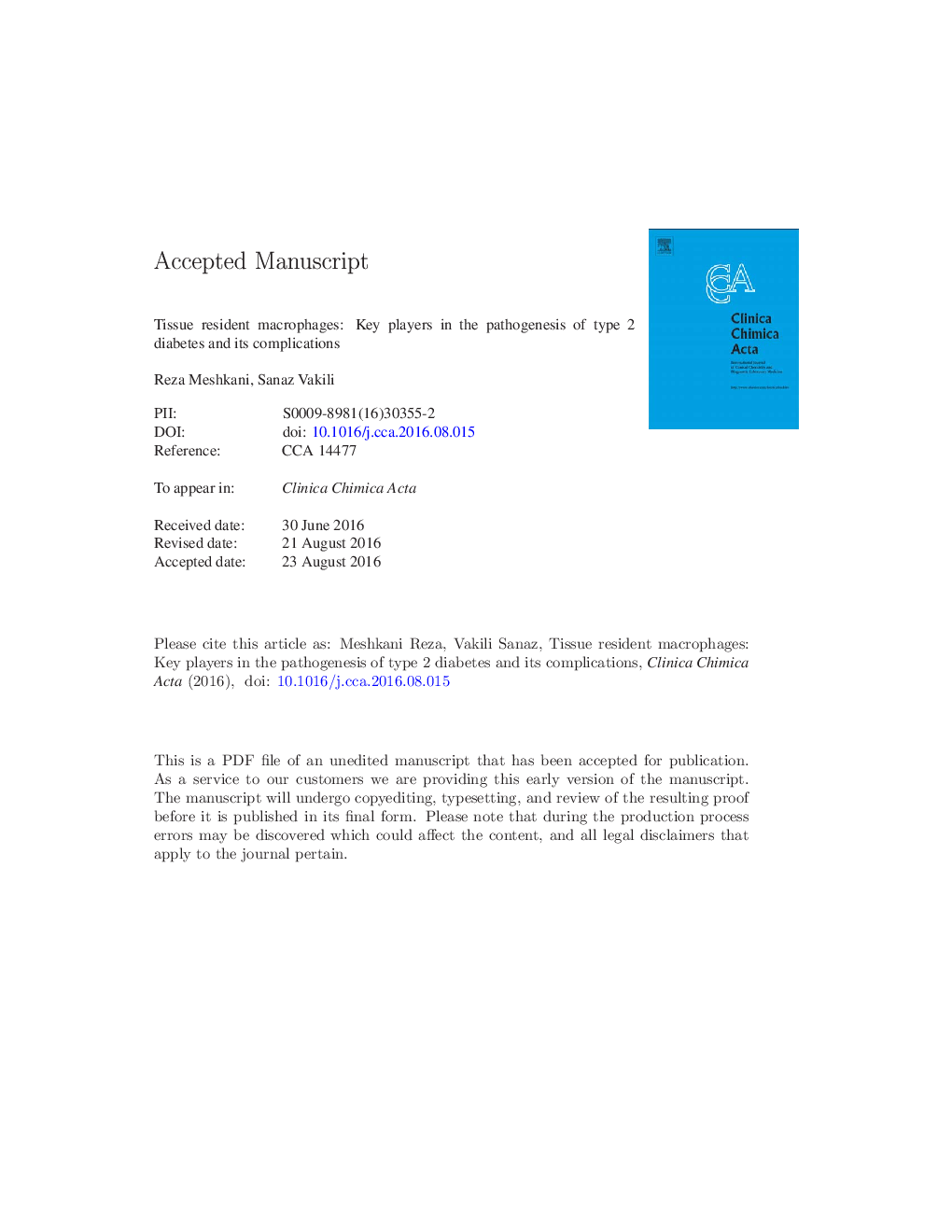| Article ID | Journal | Published Year | Pages | File Type |
|---|---|---|---|---|
| 8309834 | Clinica Chimica Acta | 2016 | 38 Pages |
Abstract
There is increasing evidence showing that chronic inflammation is an important pathogenic mediator of the development of type 2 diabetes (T2D). It is now generally accepted that tissue-resident macrophages play a major role in regulation of tissue inflammation. T2D-associated inflammation is characterized by an increased abundance of macrophages in different tissues along with production of inflammatory cytokines. The complexity of macrophage phenotypes has been reported from different human tissues. Macrophages exhibit a phenotypic range that is intermediate between two extremes, M1 (pro-inflammatory) and M2 (anti-inflammatory). Cytokines and chemokines produced by macrophages generate local and systemic inflammation and this condition leads to pancreatic β-cell dysfunction and insulin resistance in liver, adipose and skeletal muscle tissues. Data from human and animal studies also suggest that macrophages contribute to T2D complications such as nephropathy, neuropathy, retinopathy and cardiovascular diseases through cell-cell interactions and the release of pro-inflammatory cytokines, chemokines, and proteases to induce inflammatory cell recruitment, cell apoptosis, angiogenesis, and matrix protein remodeling. In this review we focus on the functions of macrophages and the importance of these cells in the pathogenesis of T2D. In addition, the contribution of macrophages to diabetes complications such as nephropathy, neuropathy, retinopathy and cardiovascular diseases is discussed.
Keywords
CXCLiNOSMCP-1AGEsIL-1βIL-10IFN-γT2DCX3CR1CCR2CCLCXCR2LTB4FFAsTLR-4VCAM-1NLRP3PDX-1MIP-1αCX3CL1IL-13IAPPchemokine (C-C motif) receptor 2NLRschemokine (C-X-C motif) receptor 2TGF-βNAFLDchemokine (C-X3-C motif) ligand 1ERKJnkMmpsIL-6LPSIL-4ICAM-1NF-κBPAMPsc-Jun N-terminal kinasePancreatic and duodenal homeobox 1ROSAtherosclerosisBeta cell dysfunctionnonalcoholic steatohepatitisFree fatty acidsinflammationpathogen-associated molecular patternsinterleukin-4Interleukin-10Interleukin-13interleukin 1βinterleukin 6Diabetesnon-alcoholic fatty liver diseasetransforming growth factor-βtumor necrosis factor alphaATMType 2 diabetesRetinopathydiabetic retinopathyTh cellNK cellT-helper cellNatural killer cellsinducible nitric oxide synthaseCytokinesTNF-αnuclear factor kappa BLeukotriene B4chemokine (C-C motif) ligandlipopolysaccharideCXC chemokine ligandAdipose tissue macrophageMacrophagesMatrix metalloproteinasesAdvanced glycation end productsInsulin resistanceIntercellular adhesion molecule 1Vascular cell adhesion molecule 1NephropathyDiabetic nephropathyNeuropathyNash Nitric oxideMonocyte chemotactic protein-1Macrophage inflammatory protein-1αChemokinesextracellular-signal-regulated kinaseInterferon gammaReactive oxygen speciesToll-like receptor-4NOD-like receptors
Related Topics
Life Sciences
Biochemistry, Genetics and Molecular Biology
Biochemistry
Authors
Reza Meshkani, Sanaz Vakili,
